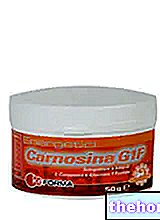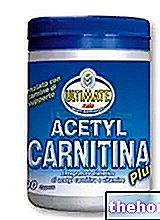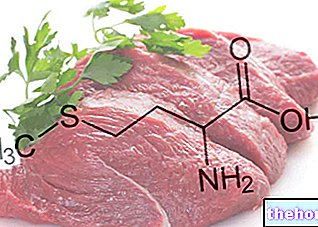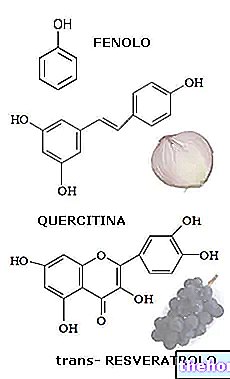Effective against diabetic pathology, in particular diabetic neuropathy, as well as in many other pro-oxidant conditions, the integration with alpha-lipoic acid has generally proved to be well tolerated.
brief review of organic chemistry

The carbon indicated by the asterisk is a chiral center (as sp3 hybridized and bound to different atoms). The presence of chiral centers (or centers of asymmetry) implies the existence of 2n enantiomers (compounds, one the mirror image not superimposable of the other, which differ only in the optical rotational power). Since n is the number of chiral centers in this case only 21 = 2 enantiomers will exist. One of these has configuration R, the other S.
Generally only one of the two enantiomers is able to react with the biological receptors and perform the desired function.
In the case of lipoic acid, the biologically active natural form is that R. The synthetic lipoic acid (also called alpha-lipoic acid) is instead a mixture of the R and S (racemic) forms. Not all drugs or food supplements with centers of asymmetry can be sold in the racemic form, since in some cases the enantiomer that has no pharmacological interest has negative effects for the organism (people with a few more years will remember the case of thalidomide and phocomelic children).
The antioxidant properties of lipoic acid are due to the presence of the sulphide bridge which acts as an electron acceptor.
The figure shows the two forms with which lipoic acid exists in nature oxidized (above) and reduced (below). These two forms are easily interconvertible through redox reactions.
) and in the lipid phase (typical of cell membranes). Thanks to this characteristic, Alpha-Lipoic Acid protects the organism from both intracellular and extracellular free radicals, in both chemical forms that are biologically present.In light of the aforementioned biological activities, Alpha-Lipoic Acid is successfully used above all as an antioxidant.
Diabetes and its complications (such as diabetic neuropathy), dyslipidemias, atherosclerosis, neurodegenerative diseases and ischemic damage are currently some of the clinical conditions in which Alpha-Lipoic Acid has proved effective.
The biological potential in sports is also being examined by experts, especially useful in preventing muscle-tendon damage exerted by reactive oxygen species produced in large quantities during intense workouts.
.
In fact, it is known that the oxidation of small LDL particles constitutes one of the main risk factors for atherosclerotic pathologies, and more precisely for the formation of the dreaded atheromatous plaque.
Alpha-Lipoic Acid and antiaging medicine
For several years now, Alpha-Lipoic Acid has been one of the most useful anti-aging remedies.
The anti-aging action of Alpha-Lipoic Acid would in this case be attributable to the action:
- antioxidant, important in preserving the correct functional and structural integrity of tissues and some organs such as the liver;
- metabolic, especially valuable in optimizing glucose metabolism, reducing the formation of advanced glycosylation complexes (protagonists of aging).
Alpha-Lipoic Acid and Diabetes
Despite its sensitive hypoglycemic action, Alpha-Lipoic Acid is successfully used in diabetic pathology, especially in the management of diabetic neuropathy.
In several clinical trials it has in fact been shown that the use of Alpha-Lipoic Acid, for several weeks, can contribute to a reduction of some typical symptoms of neuropathy, such as paraesthesia, pain and peripheral burning sensation.
At the base of this activity it would seem to be the ameliorative action on the nervous vascularization.
Alpha-Lipoic Acid and sport
The use of Alpha-Lipoic Acid in athletes would be justified above all for its myprotective activity against the damage exerted by oxygen free radicals.
From some studies, mostly experimental, it would emerge the ability of Alpha-Lipoic Acid, in association with other antioxidants, to:
- Prevent exercise-induced decrease in glutathione-transferase activity;
- Protect the muscle from oxidative damage;
- Counteracting the lipid peroxidation of the membranes.
, as well as during pregnancy and breastfeeding.
it could induce an unpredictable and unwanted lowering of blood glucose values. This side effect must be reported on the label of food supplements based on lipoic acid..



























